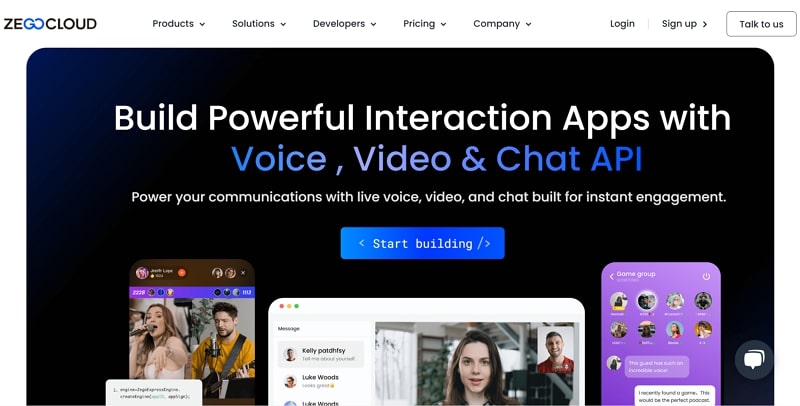Most developers recommend building native apps due to their superior performance and user experience. Compared to other types of apps, native ones provide better optimization for speed and responsiveness, as they are built specifically for a particular OS. Other than that, these applications can access platform-specific hardware directly, such as cameras and GPS. To boost your knowledge, this article will explain everything related to native app development.
What is a Native App?
When talking about these types of apps, we can say these applications are developed specifically for a particular mobile operating system, like iOS or Android. Moreover, native apps are built using the programming languages and tools native to that platform. For example, iOS native apps require Swift language, while Android apps are built with Java or Kotlin.
Because they are designed for one platform, native mobile apps run smoothly, taking full advantage of the device’s features. Anyone can download these applications from the respective app stores like the App Store or Google Play.
Advantages of Native Mobile Apps
As these apps are platform-specific, users can enjoy optimized performance and utility without glitches. So, let’s move forward to discuss some of the significant benefits of utilizing cloud-native apps compared to other applications:
- Better User Experience: This application delivers a superior user experience with optimized UI/UX designs supporting specific platform guidelines.
- Access to Features: Native mobile apps can also benefit from all built-in device features like GPS, camera, microphone, and sensors seamlessly.
- Security: These apps secure your data with advanced data encryption and secure authentication mechanisms.
- Updates and Support: Another advantage of native mobile app development is that it allows users to receive regular updates directly from the platform’s app store.
Disadvantages of Native Applications
While building a native app for a specific platform, you need to code and develop the application separately. So, this can raise challenges for developers who are not experienced enough in this field. Through the following disadvantages, you can recognize the limitations of native app development:
- Development Cost: You need to pay extra money to develop these apps, as they require separate codebases for different platforms.
- Time-Consuming: Moreover, developers have to build and maintain multiple versions of the app for specific platforms, which can increase development time.
- Resource Intensive: Native mobile app development requires specialized knowledge and skills, often necessitating larger development teams.
- Compatibility Issues: Other than that, different versions of such apps may have compatibility issues with various device models and OS versions.
Differences Between a Native App vs. Web App vs. Hybrid Application
Compared to other types of applications, native apps offer multiple advantages, which we have already discussed. However, such types of applications do have some limitations, which can affect the development process. So, this section aims to clarify the difference between native apps vs. web apps to help you select the best type for your project.
| Metrics | Native Apps | Web Apps | Hybrid Apps |
|---|---|---|---|
| Definition | When talking about native mobile apps, they represent the type of apps developed specifically for a particular platform. | In comparison, such apps run in a web browser and are developed through standard web technologies like HTML. | These applications combine elements of both native and web apps, as they are built using web technologies but wrapped in a native container. |
| Development Language | Swift for iOS, Kotlin for Android | HTML, CSS, JavaScript | CSS, JavaScript with frameworks like React Native |
| Performance | High | Lower | Moderate |
| Access to Device Features | Full access | Limited access through web APIs | Access via plugins |
| Development Cost | High | Low | Moderate |
| Time to Market | It takes a long time, as native apps require separate development for each platform. | Alternatively, web apps offer quick deployment across platforms, so they require less time. | When comparing hybrid applications vs. native apps, the first one requires less time. |
| Security | High | Low | Moderate |
| Examples | WhatsApp, Instagram | Google Search, BBC News | Twitter, Uber, Airbnb |
Common Examples of Native Apps
Many applications run on the native mobile app development system, as it offers better speed and performance optimization on different platforms. Most of these apps are available on both Android and iOS, requiring a separate codebase for each platform. Here, we will familiarize you with some of the most famous native applications available:
- Social Media Apps: Facebook, Instagram
- Communication Apps: WhatsApp, Messenger
- Entertainment Apps: Netflix, Spotify
- Shopping Apps: Amazon, eBay
- Education Apps: Duolingo, Khan Academy
- Gaming Apps: PUBG Mobile, Clash of Clans
How Do You Build a Native App?
Once you are familiar with what a native app is and its benefits, you may want to build such an application for your development project. For this purpose, you need to have an advanced level of skills and knowledge of native app development. People with the required skills can go through the steps given below to build their application:
1. Define Your App Idea and Requirements
Before getting into the technicalities, you need to clearly outline the function and target audience of your app. Besides that, developers should list the core features and functionalities they want to include in their native apps.
2. Choose Your Platform and Specific Language
Moving forward, we recommend you figure out the platforms for which you want to build a native mobile app. Afterward, you can proceed to pick the language specific to the chosen application platform. To build an iOS application, you get the option to select from Swift or Objective-C languages. On the other hand, developers will be able to build Android applications with Kotlin or Java.
3. Select and Set Up the IDE
Once you have determined the type of application you want to build, proceed to choose the IDE for the native app development process. For iOS apps, Xcode is the official IDE, which supports Swift and Objective-C. In contrast, you can get help from the Android Studio to build native apps for this platform. Next, you have to install and download the selected IDE to begin the application development process.
To optimize the process, you can install necessary SDKs, libraries, and emulators to save time and effort. In this regard, you can get help from ZEGOCLOUD, as it provides excellent communication APIs and SDKs for native mobile app development.
4. Develop and Test the Native App
Now, it is time to start coding using the chosen programming language for app development. While doing so, you can build your app’s UI using Storyboards and Interface Builder in Xcode or XML layouts in Android Studio. Upon the completion of coding, developers need to test individual components of their native app for correctness.
Enhancing Native App Engagement with ZEGOCLOUD’s Real-Time Communication Solutions
While building a native app, you will need to write a separate code for each platform, which can be pretty time-consuming. So, you should find ways to cut short the time for native app development in every way possible. ZEGOCLOUD can help you in this regard with its app development UIKits containing communication APIs and SDKs. Upon integrating these APIs, you can add video-calling and voice-calling features to your apps without having to write code.

Other than that, you can even integrate live streaming and in-app chat features into your native apps to boost engagement. With these customizable APIs, you can alter the codebase to match the requirements of the specific platform. So, ZEGOCLOUD will prove to be valuable for native app developers if they want to integrate real-time communication features into their apps.
Conclusion
In summary, developers wanting to build native applications should have expertise in writing code for specific platforms. After building these native mobile apps, you can benefit from high-performance optimization due to their integration with the device’s features. To cut short the native mobile app development time, we recommend you take help from APIs offered by ZEGOCLOUD.
Read more:
Let’s Build APP Together
Start building with real-time video, voice & chat SDK for apps today!










